
Galaz Pueblo Ruin

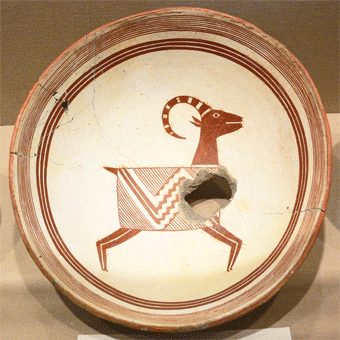

Above: Ceramic bowls found in burials over individuals' faces. Mimbres pottery is known for its exquisite representation of myriad animals of the diverse southwestern New Mexico biota.
In the middle of the last Millennium, three major Native American cultures emerged in what is now called the US Southwest: Anasazi, Hohokam, and Mogollon. Within the Mogollon culture, a sub-culture, the Mimbres, built villages in the Mimbres River and Gila River valleys in southwestern New Mexico between1000 to 1250 CE. "Mimbres" derives from the early Spanish settlers, mimbres, for willow saplings found along river banks.
Galaz is one of the largest and best known of the Mimbres villages, and is the longest inhabited Mimbres site. It is a place of extraordinary artistic achievement in ceramic design, the bowls of which are now in collections displayed in museums world wide. Anthropologists (LeBlanc and Ellis, 2001) have argued that the most spectacular pot painting designs could have been created by a single or a few artists, and that their production of between 50 and 100 bowls per year could account for the entirety of known Mimbres black-on-white ceramics. It seems as if, In Mimbres culture, even though the pottery was not "signed", an artist could become known as an individual.
Galaz was founded around 550 CE, and occupied for eight centuries. At first, the people built and lived in round pit-houses; then between 1000 CE and 1150 CE, they began to build villages of above ground rectilinear room clusters. The earlier pit-houses, entered through roof hatches with ladders, were remodeled to function as "kivas". The CG model of Galaz shown here, based upon archaeological surveys, is composed of about 150 single-story rooms in small clusters and larger room blocks grouped around irregular plazas. The above ground rooms were also entered by ladders through roof-hatch smoke-vents.
An important architectural element of Galaz is the large semi-subterranean rectangular room at the south end of the northwest room block. Its area is 1656 square feet (154 square meters). Three wood columns support a primary centered roof beam. The floor, recessed into the river gravel 5.5 feet (1.7 meters) below the main plaza level, has a fire hearth, and small hole sipapu (place of emergence). This is an indication that the room may have been an early development of the "Great Kiva" of later pueblo villages, the place for the community's unifying ritual functions.
While Mimbres pottery represents a high artistic achievement of the culture, it was not matched by the village architecture, built with river cobbles and copious mud. The infirm bearing capacity of these walls made them unlikely to have supported upper stories, and most rooms had interior wood columns for roof support.
Galas ruin was bulldozed by pot hunters in 1976, wh0 removed more that 800 Mimbres ceramic masterpieces from the site. The iconography of the diverse varieties of animals, human rituals, and geometrical patterns portrayed in these bowls sets them apart from other contemporary Southwestern cultures ceramics, and indicates a deep integration of the people with the ecology of their riparian environment.
Elevation is 5720 feet (1743 meters) above sea level.
Location coordinates: 32°47'53.7"N 107°55'10.3"W
32.798255, -107.919521
Materials of construction: river cobble stones set in adobe walls, wood log roof structure, supported by wood columns, with mud/clay roof over river saplings.
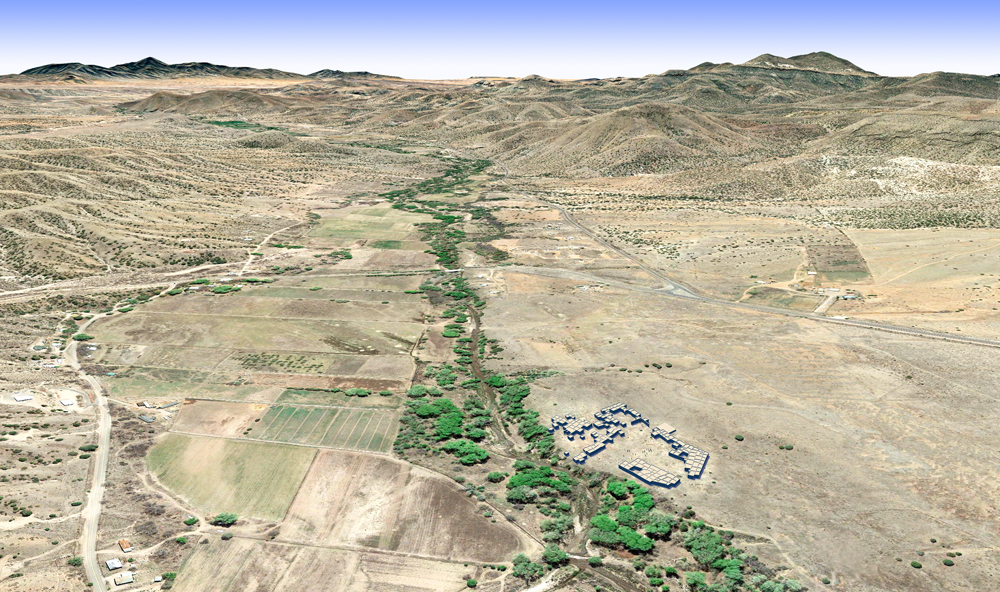
Looking south. Photomontage of CG model over aerial photo of actual Mimbres River site near San Lorenzo, NM; Mimbres Peak, elevaion 7411 feet (2259 meters) is on the horizon right side
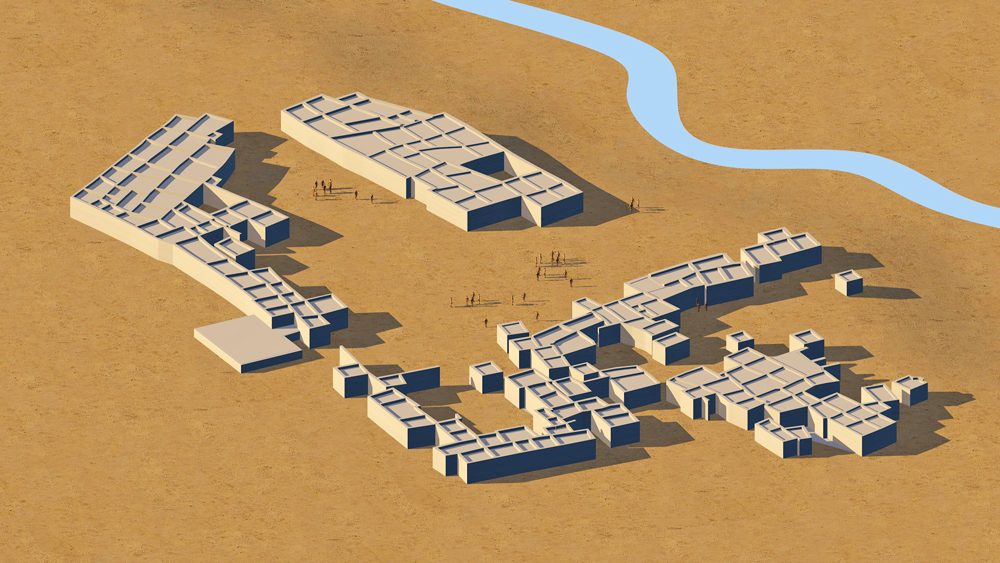
Looking north.
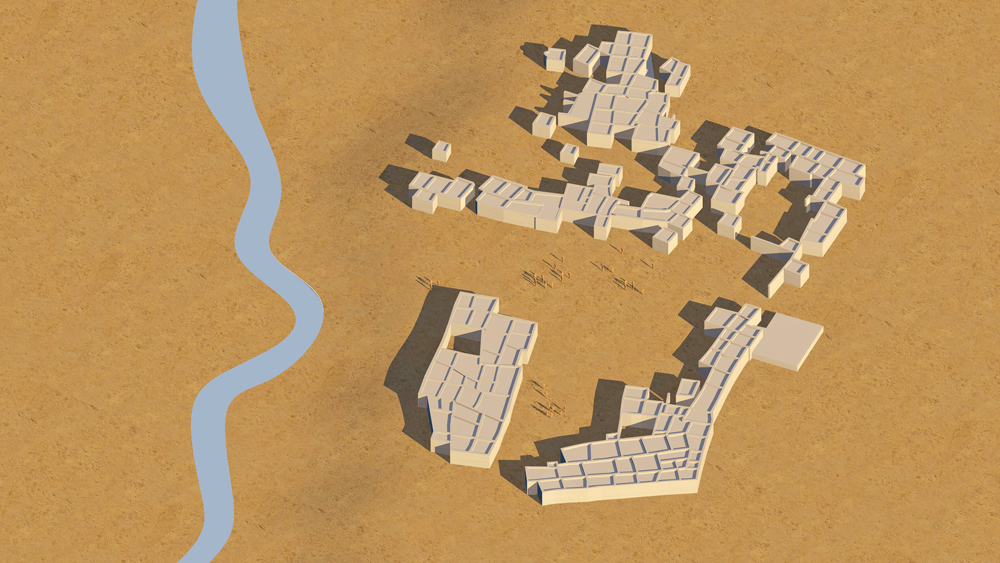
Looking southeast.
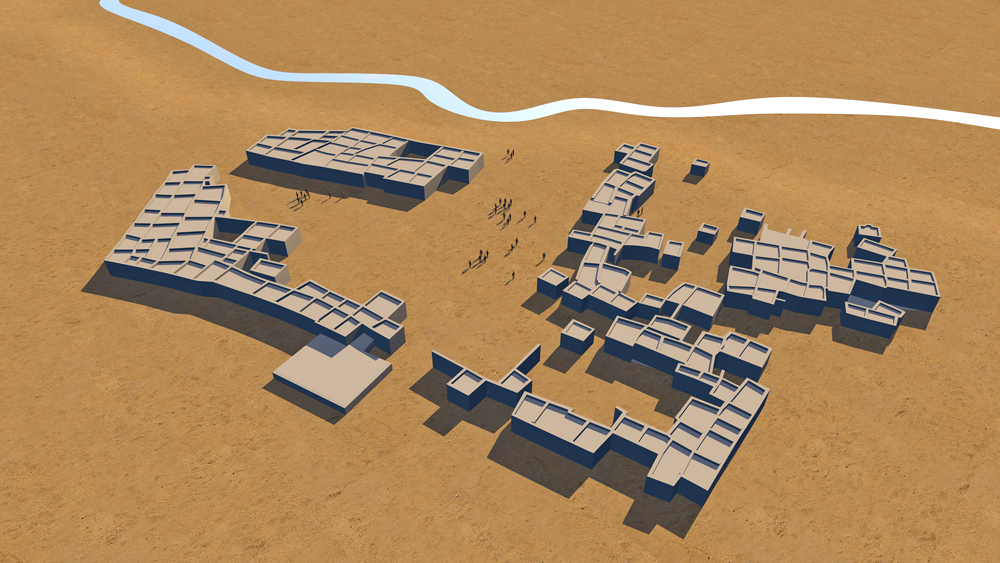
Looking northeast.

Looking east.

Looking northwest.

Plan view with scale and orientation.
Data for this model from:
1. Morgan, William N., 1994. ANCIENT ARCHITECTURE OF THE SOUTHWEST, University of Texas Press, Austin, Texas.
2. Anyon, Roger, and LeBlanc, Stephen A.. 1980. The Evolution of Mogollon-Mimbres Ceremonial Structures". The Kiva 45(3) and
1984. The Galaz Ruin. A Mimbres Village in Southwestern New Mexico. Albuquerque: Maxwell Museum of Anthropology and University of New Mexico Press.
3. LeBlanc, S., and M. Ellis, 2001. The Individual Artist in Mimbres Culture: Painted Bowl Production and Specialization. Poster presented at the 66th Annual Meeting of the Society of American Archaeology, New Orleans, LA.
4.Smithsonian, and National Museum of Natural History: https://www.centralcalclay.com/mimbres.html